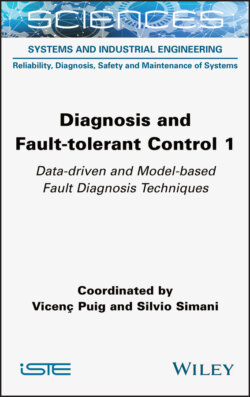Читать книгу Diagnosis and Fault-tolerant Control 1 - Группа авторов - Страница 12
I.2. Nomenclature
ОглавлениеBy going through the literature, one immediately recognizes that the terminology in this field is not consistent. This makes it difficult to understand the goals of the contributions and to compare the different approaches.
The IFAC SAFEPROCESS Technical Committee therefore discussed this matter and tried to find commonly accepted definitions. Some basic definitions can be found, for example, in the RAM (Reliability, Availability and Maintainability) dictionary (Omdahl 1988) and in contributions to the IFIP (International Federation for Information Processing) (IFI 1983).
Some of the terminology used in this book is given below. These are based on information obtained from the IFAC SAFEPROCESS Technical Committee and are considered “on-going” in the sense that new definitions and updates are still being made.
1 1) States and signals- Fault: an unpermitted deviation of at least one characteristic property or parameter of the system from the acceptable, usual or standard condition.- Failure: a permanent interruption of a system’s ability to perform a required function under specified operating conditions.- Malfunction: an intermittent irregularity in the fulfillment of a system’s desired function.- Error: a deviation between a measured or computed value of an output variable and its true or theoretically correct value.- Disturbance: an unknown and uncontrolled input acting on a system.- Residual: a fault indicator based on a deviation between measurements and model-equation-based computations.- Symptom: a change of an observable quantity from normal behavior.
2 2) Functions- Fault detection: determination of faults present in a system and the time of detection.- Fault isolation: determination of the kind, location and time of detection of a fault. It follows fault detection.- Fault identification: determination of the size and time-variant behavior of a fault. It follows fault isolation.- Fault diagnosis: determination of the kind, size, location and time of detection of a fault. It follows that fault diagnosis includes fault detection and identification.- Monitoring: a continuous real-time task of determining the conditions of a physical system by recording information, recognizing and indicating anomalies in the behavior.- Supervision: monitoring a physical system and taking appropriate actions to maintain the operation in the case of a fault.
3 3) Models- Quantitative model: use of static and dynamic relationships among system variables and parameters in order to describe a system’s behavior in quantitative mathematical terms.- Qualitative model: use of static and dynamic relationships among system variables in order to describe a system’s behavior in qualitative terms such as causalities and IF–THEN rules.- Diagnostic model: a set of static or dynamic relationships that link specific input variables, the symptoms, to specific output variables, the faults.- Analytical redundancy: use of more (not necessarily identical) ways to determine a variable, where one way uses a mathematical process model in an analytical form.
4 4) System properties- Reliability: ability of a system to perform a required function under stated conditions, within a given scope, during a given period of time.- Safety: ability of a system to operate without causing danger to persons, equipment or the environment.- Availability: probability that a system or equipment will operate satisfactorily and effectively at any point of time.
5 5) Time dependency of faults- Abrupt fault: fault modeled as step-wise function. It represents bias in the monitored signal.- Incipient fault: fault modeled by using ramp signals. It represents drift of the monitored signal.- Intermittent fault: combination of impulses with different amplitudes.
6 6) Fault terminology- Additive fault: it influences a variable by an addition of the fault itself. It may represent, for example, offsets of sensors.- Multiplicative fault: it is represented by the product of a variable with the fault itself. It can appear as parameter changes within a process.
